A modern, brand-championing digital presence is a core concern for Samsung. Customers routinely visit the site to learn about products and find technical detail. Their award-winning products are sold through countless third party retailers, where many diverse co-branded stories and offers can distract and dilute loyalty. Ecommerce represents an opportunity for Samsung to present a seamless ecosystem, and gain critical brand affinity.
While chain and big box retailers win customer attention with deals and discounts, Samsung’s dot com celebrates product stories and the brand’s best-in-class authority. Closing the sale on Samsung.com, versus at a partner retailer, means convincing the customer of the ecosystem’s ease and assurance — Samsung earns these transactions with efficient flows, and mindful access to need-based services such as financing, warranties, and activation.
After establishing best practices for the online sale of phones, TVs, computers and accessories, the brand turned it’s attention to home appliances such as dishwashers, refridgerators, ovens and ranges. Retail performance of these products has been consistently on the rise, with segments seeing 40-60% growth in sales year over year since 2015. To compete and capture sales, Samsung would commit to ‘Last Mile Services’ such as white glove home delivery and installation services.
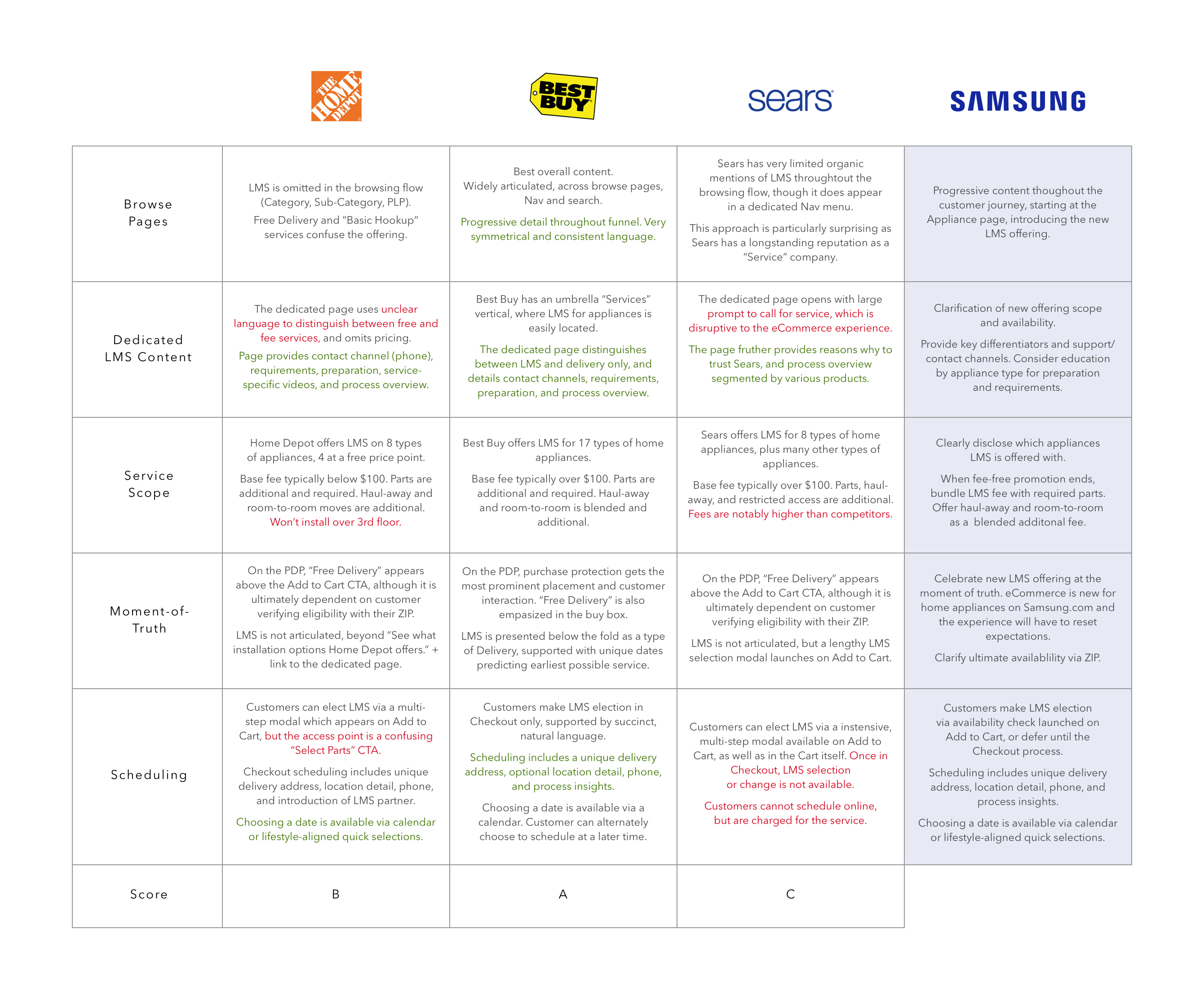
My work began alongside business partners and supply chain strategists, vetting Last Mile Service partners and defining services. I kicked off several rounds of competitive analysis with an audit of leading customer experiences, capturing offering details but also assessing user journey and required interactions. Next, I designed a study run with usertesting.com which allowed me to observe users navigating competitor sites and completing tasks such as buying a home appliance and attempting to secure home delivery and installation.
Marrying these observations with successes and insights from Samsung’s established eCommerce segments, I was able to highlight and socialize a simple recipe for building customer confidence and providing a distinct, differentiated online purchase experience for home appliances.
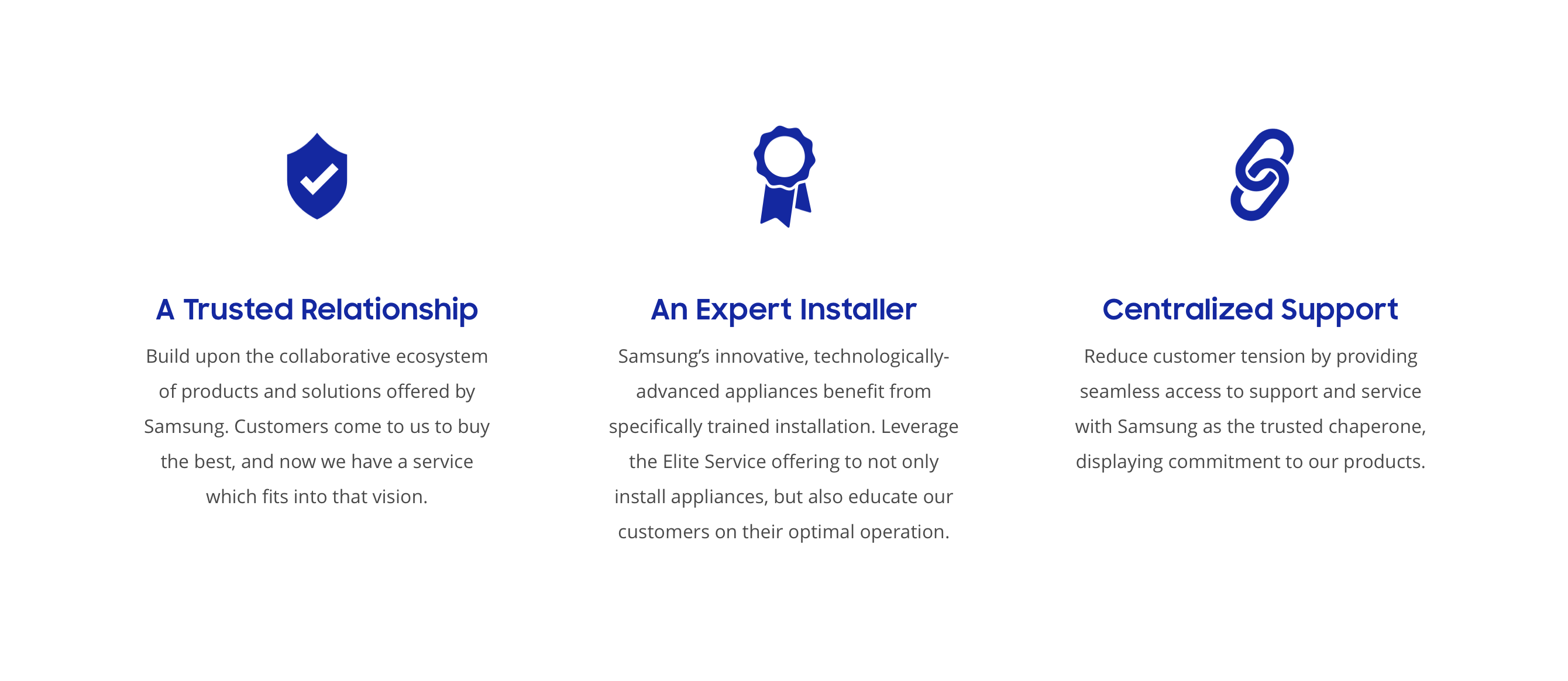
Activating these insights to trigger action and confidence involves consistent and thoughtful placement and narrative throughout the customer’s experience. I took to the site, and highlighted a multitude of opportunities to drive desired behavior and augment existing templates. Additionally, new pages and templates would be necessary to support decision-making for purchases of home appliances. Primary research uncovered that most buyers were replacing existing, worn-out appliances in place, rather than considering full tear-out and redesign renovations. Lastly, facilitating delivery date selection and coordinating installs would require new user flows and design system components.
Focusing on internal efficiency, and leveraging established backend services, I commited to recommending minimally distruptive integration into existing ecommerce. I workshopped proposed updates with various teams to socialize my findings and recommendations, and validate feasibility. Articulating these implications was key in coordinating with supply chain and data management teams, and this work was used to define LMS partner scopes and service details.
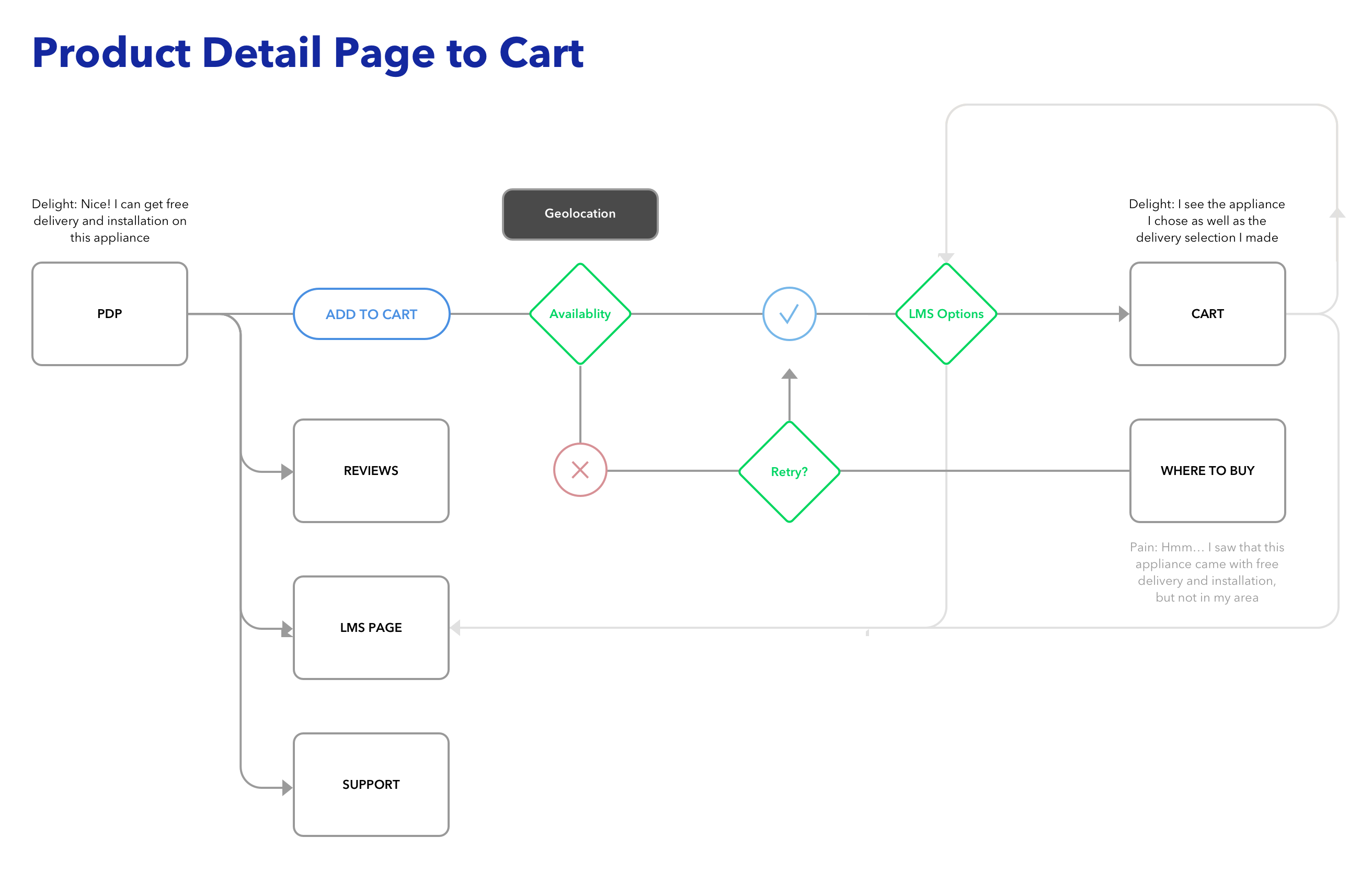
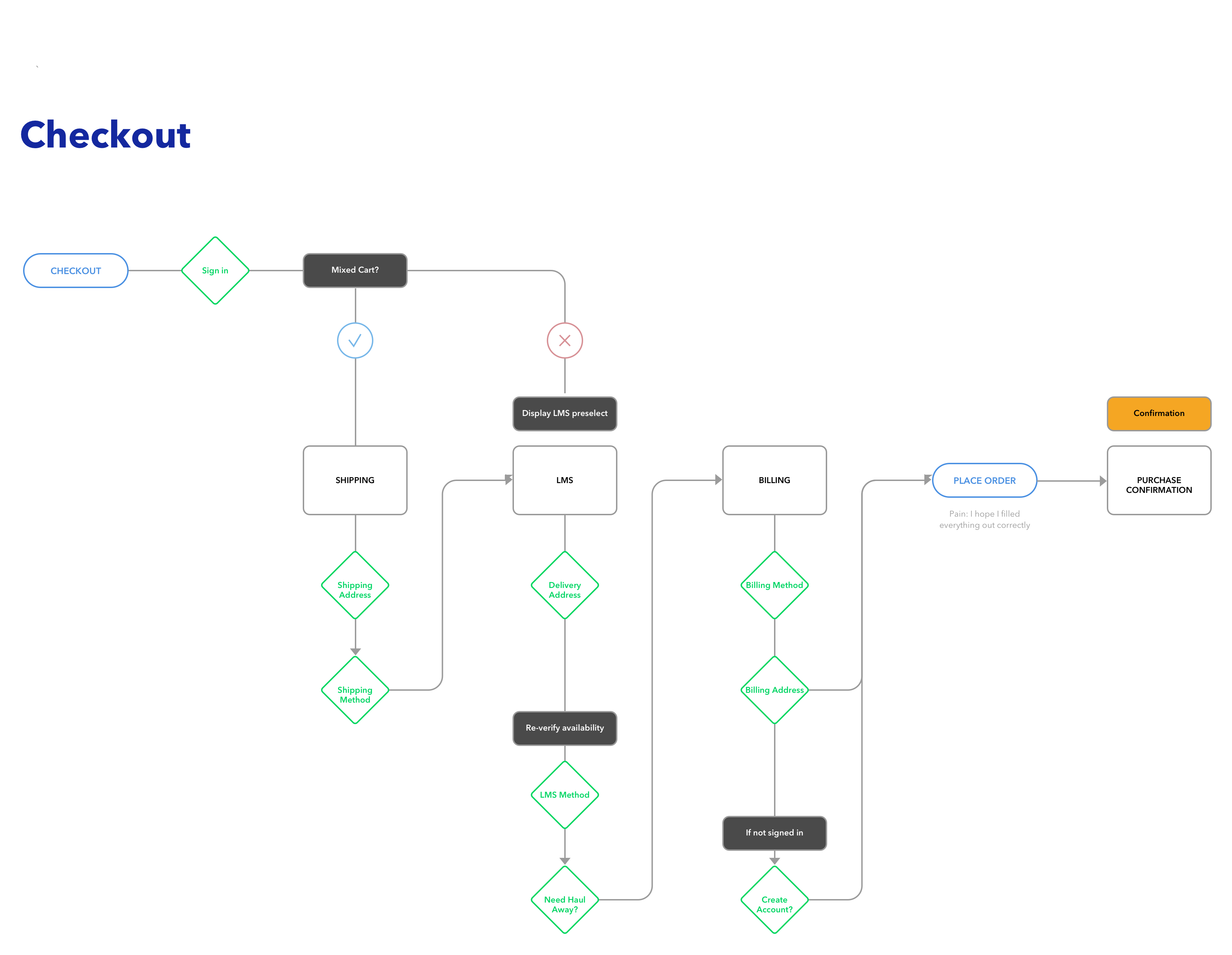
Flows highlighted where new elements would augment existing work. Since the consideration and checkout process was rather unique with large home appliances, the final solution entailed alternate journeys through add-to-cart and checkout for home appliance products only; customer journeys for portable electronics and entertainment products would remain as is.
I got down details with wireframes, socialized and approved as clickable prototypes. Scope for this phase included unique templates for product detail pages, contingent cart and checkout, new tooling for purchase option selections, as well as a dedicated offer detail page. Samsung had a robust design sytem in place with a broad library of components and modules to build with — a small number of additional components was added to support new features, particularly for scheduling delivery and installation.
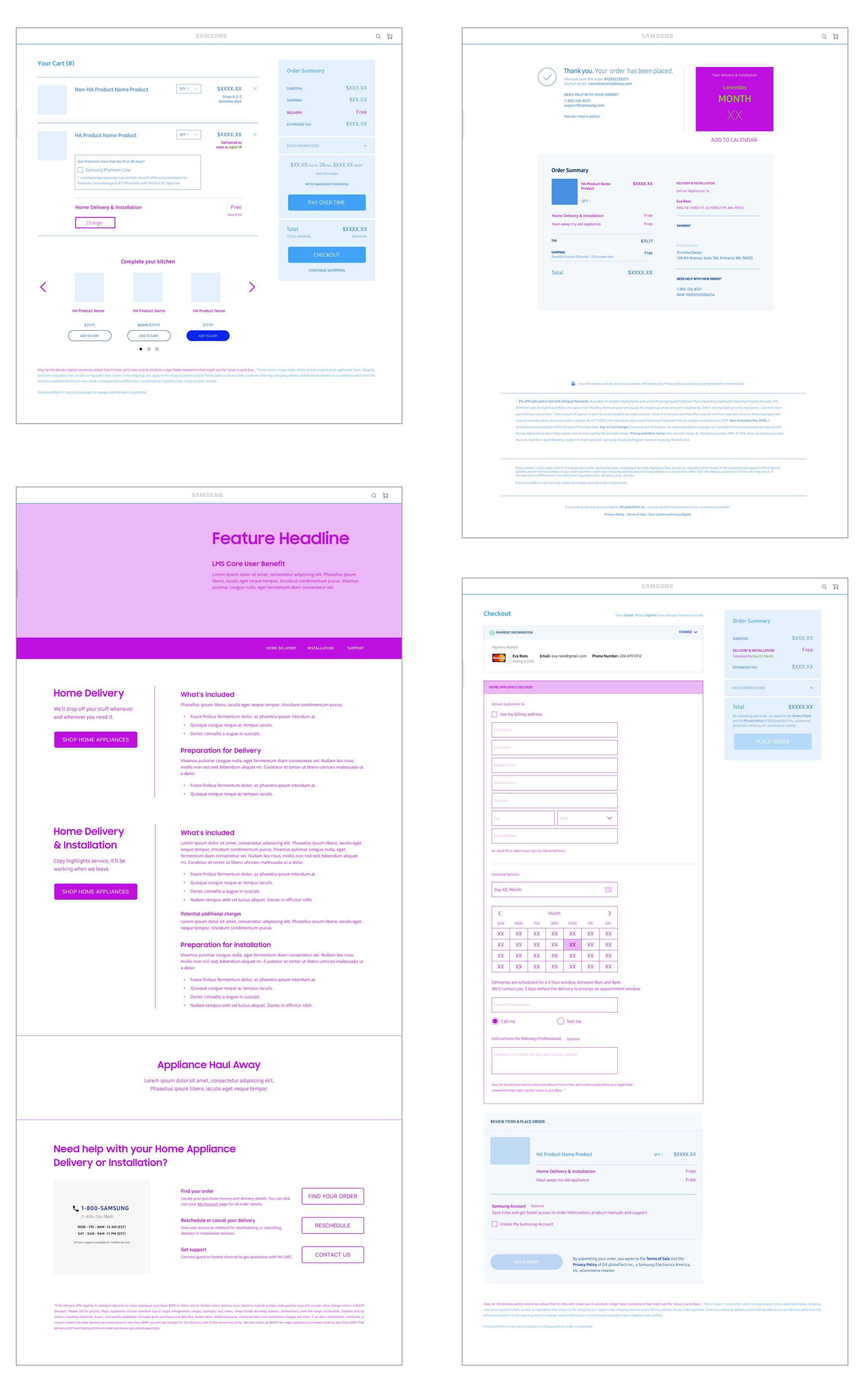
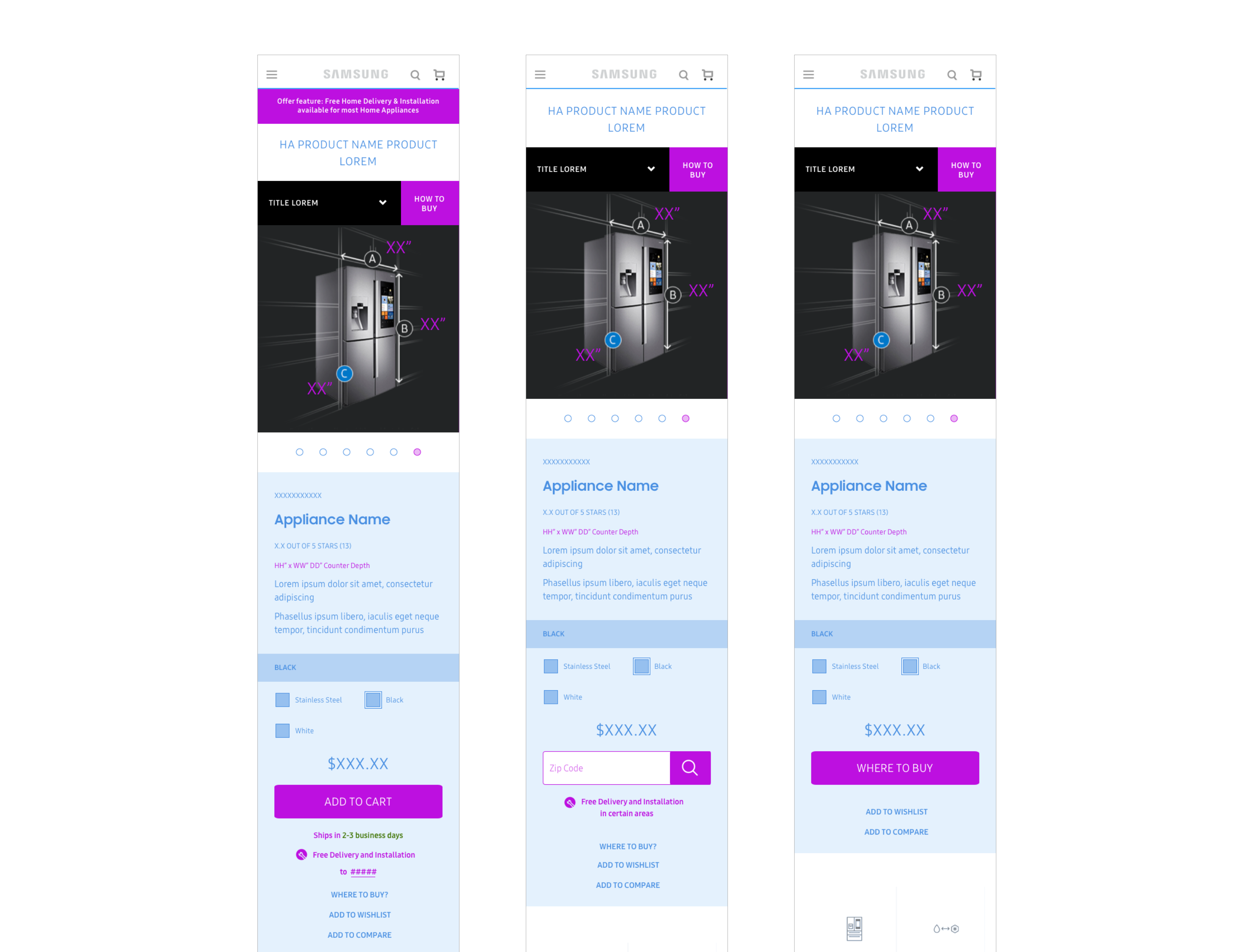
For Samsung and their customers, white glove home delivery and installation services are a totally new venture. Beyond building awareness and facilitating transactions, I made recommendations across the entire timeline, with many new triggers post purchase. Timing, clarity, and coordination are key to aceing a customer’s experience, and these new moments offered huge opportunities for Samsung to make a best in class impression. Patterns and profiles for new communications, expansions to Samsung customer account pages and FAQs, as well as backend services were passed to other teams for production.
In addition to focusing on building Samsung’s home appliance ecommerce experience, my agency-based embedded team joined Samsung in Seattle to launch their local UX department. We partnered with engineers, product managers, developers and ops teams to define process, expectations of our discipline, formats for deliverables, and approval cycles. Over several months, Samsung built their FTE team around us and successfully built a full UX team in Seattle.

The obvious goals of coordinating a new customer experience during this project were often augmented with discovery and coordination of internal processes and implications. It was a pleasure to bring the UX dialog at Samsung's Seattle office, as well as to probe within the offering to find ways of elevating the customer experience.